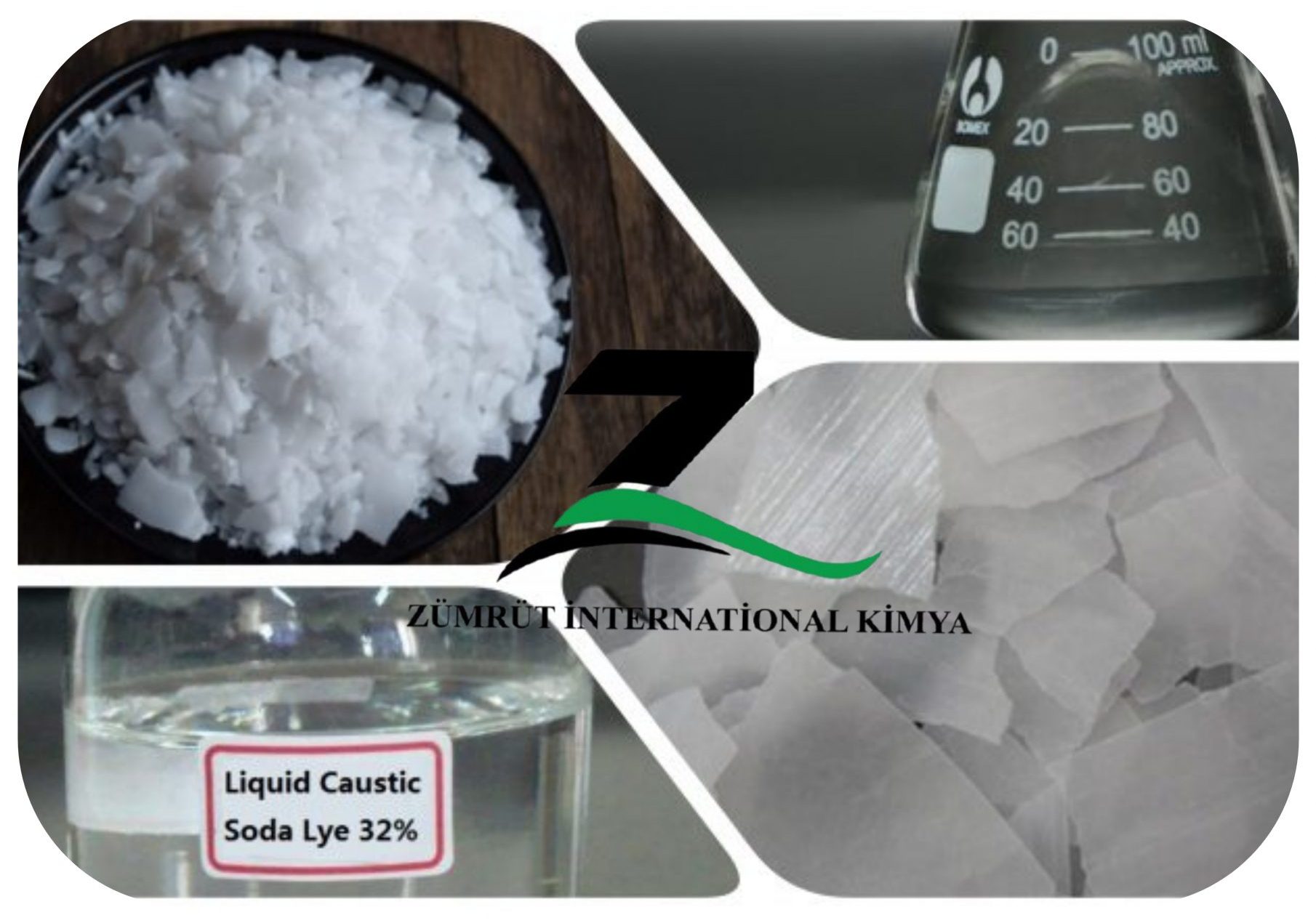
Caustic soda Description
Caustic soda, also known as sodium hydroxide (NaOH), is a strong metallic base used in various industries and for cleaning. It is highly corrosive and reactive, and can be found in various forms such as flakes, pellets, and a 50% liquid solution with water. It is hygroscopic and easily absorbs water molecules from the air. Caustic soda is less soluble in ethanol and methanol than water. Its largest application is in the paper and pulp industry, where it is used for de-inking paper and bleaching.
Other industrial applications include textile processing, bleach manufacturing, petroleum production, aluminum production, chemical processing, water treatment, and detergents. In detergents, caustic is used in saponification reactions and for anionic surfactants.
It is a common base in laboratories and used for cleaning in homes. The industrial manufacture of caustic soda involves a chlor-alkali process, which separates chlorine and sodium hydorxide through electrolysis. The three most common methods are membrane cell process, diaphragm cell process, and mercury cell process. Due to its high reactivity and corrosiveness, caustic soda must be used carefully, as it can burn skin and damage eyes. Safety precautions, such as gloves and glasses, are necessary when using caustic soda.
Different types of Caustic Soda
Caustic soda, also known as sodium hydroxide, is a chemical compound used for many purposes. Applications for this chemical include the following three primary forms:
Caustic Soda Flakes
Flakes are flat, crystalline pieces of sodium hydroxide. They are made by evaporating a concentrated solution of sodium hydroxide. Flakes are often preferred in applications that require dry caustic soda-for example, soap making and cleaning agents.
Liquid Caustic Soda
It is a high concentration water elution of sodium hydroxide. It is also very corrosive and therefore requires great care in handling it. Applications of caustic soda lye go into many different fields like pulp and paper, textiles, metal processing.
Uses
Sodium hydroxide is a versatile chemical used in various industries, including cleaning, medicine, energy, water treatment, food production, aluminum ore processing, and automation.
It is used in the production of soaps, detergents, and chemicals like chlorine bleach. This Product in cleaning and disinfectant products, sodium hydroxide is used to produce soaps and detergents that dissolve fats and grease in water.
In pharmaceuticals and medicine, sodium hydroxide is used to manufacture medicines and pharmaceutical products, such as aspirin, anticoagulants, and cholesterol-reducing medications.
In the energy sector, sodium hydroxide is used in fuel cell production, which efficiently produces electricity for various applications.
It is also used in municipal water treatment facilities to control water acidity and remove heavy metals from water. Additionally, sodium hydroxide is used in food production, curing foods like olives and browning Bavarian-style pretzels.
In wood and paper products, sodium hydroxide is used to dissolve unwanted material in wood, leaving relatively pure cellulose. It is also used in paper recycling and refining raw materials for wood products.
Aluminum ore processing involves extracting alumina from naturally occurring minerals, which is used to make aluminum and various products like foil, cans, kitchen utensils, beer kegs, and airplane parts. Aluminum is also used in building and construction materials for facades and window frames.
In other industrial manufacturing uses, sodium hydroxide is used in various industries, including rayon, spandex, explosives, epoxy resins, paints, glass, and ceramics. It is also used in the textile industry for dye production, cotton fabric processing, laundering, bleaching, metal cleaning and processing, oxide coating, electroplating, and electrolytic extracting.
Packaging and storage
Caustic soda is packaged in 50-lbm [22.7-kg], multiwall paper sacks with plastic liners. Other packaging includes fiberboard or steel drums of various sizes as well as other sack sizes.
Store at room temperature in a dry, well-ventilated area. Keep in the original container. Hold the container closed. Stay away from heat, sparks, and flames. Store away from incompatibles.

